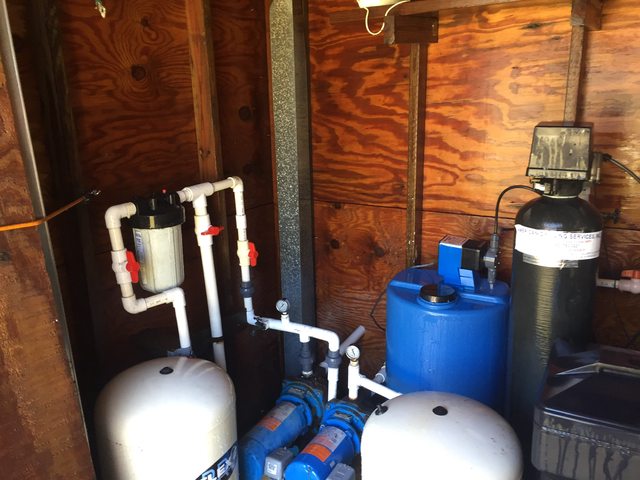Tim Beck
New Member
I just purchased a home with an in-ground irrigation system. I noticed an unusual plumbing setup and can't make much sense of it. The water main (city water) enters the basement below ground on the north side, and I can follow the copper pipes to a spigot outside the north wall.
On the south side of the basement, there is a 240v motor and pump that supplies the irrigation system via PVC pipe and is activated by means of a pressure switch. The pump is fed from a large copper pipe that protrudes from the concrete floor of the basement, and is not connected at any point to the incoming water main that supplies the rest of the house.
What is going on here? I've only ever had well water, so I don't know much about city setups. It doesn't seem proper that such a large supply of water would seemingly not be metered and billed to me. The home was inspected and the inspector noted that the basement sump pump discharged into the city sewer pipes, which is apparently typically against code, but he said nothing of the sprinkler pump. Did someone do something shady in the past? Is the water metered elsewhere? Is the city unconcerned about it because the water discharges into the lawn, rather than back into the sewer system where it needs to be treated?
Any help would be appreciated, as I'm hesitant to ask the water department and find that it's a violation and might result in a fine or costly corrections. Thanks in advance.
On the south side of the basement, there is a 240v motor and pump that supplies the irrigation system via PVC pipe and is activated by means of a pressure switch. The pump is fed from a large copper pipe that protrudes from the concrete floor of the basement, and is not connected at any point to the incoming water main that supplies the rest of the house.
What is going on here? I've only ever had well water, so I don't know much about city setups. It doesn't seem proper that such a large supply of water would seemingly not be metered and billed to me. The home was inspected and the inspector noted that the basement sump pump discharged into the city sewer pipes, which is apparently typically against code, but he said nothing of the sprinkler pump. Did someone do something shady in the past? Is the water metered elsewhere? Is the city unconcerned about it because the water discharges into the lawn, rather than back into the sewer system where it needs to be treated?
Any help would be appreciated, as I'm hesitant to ask the water department and find that it's a violation and might result in a fine or costly corrections. Thanks in advance.


